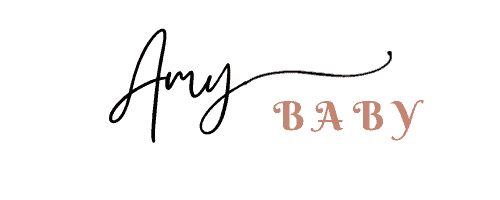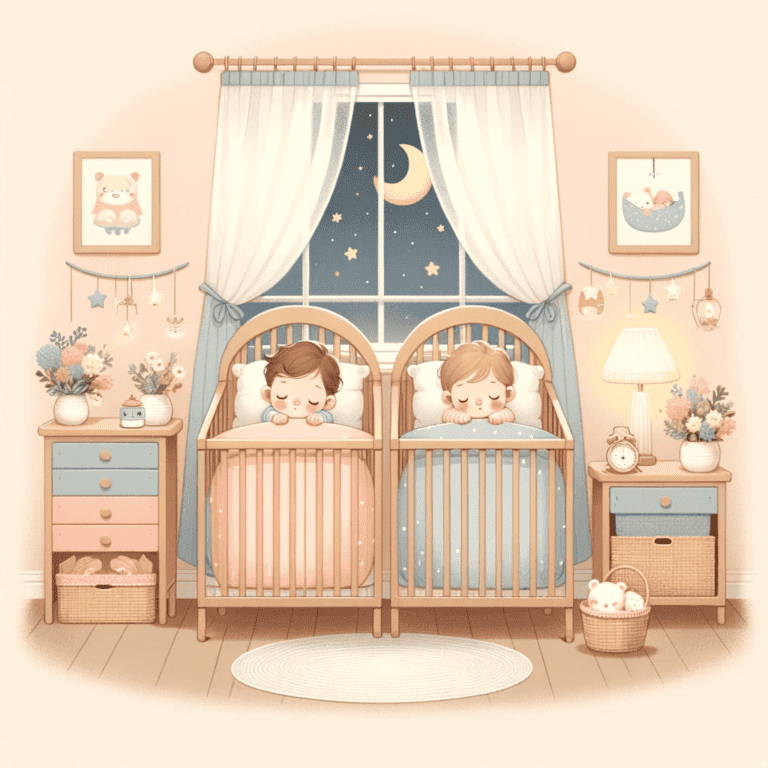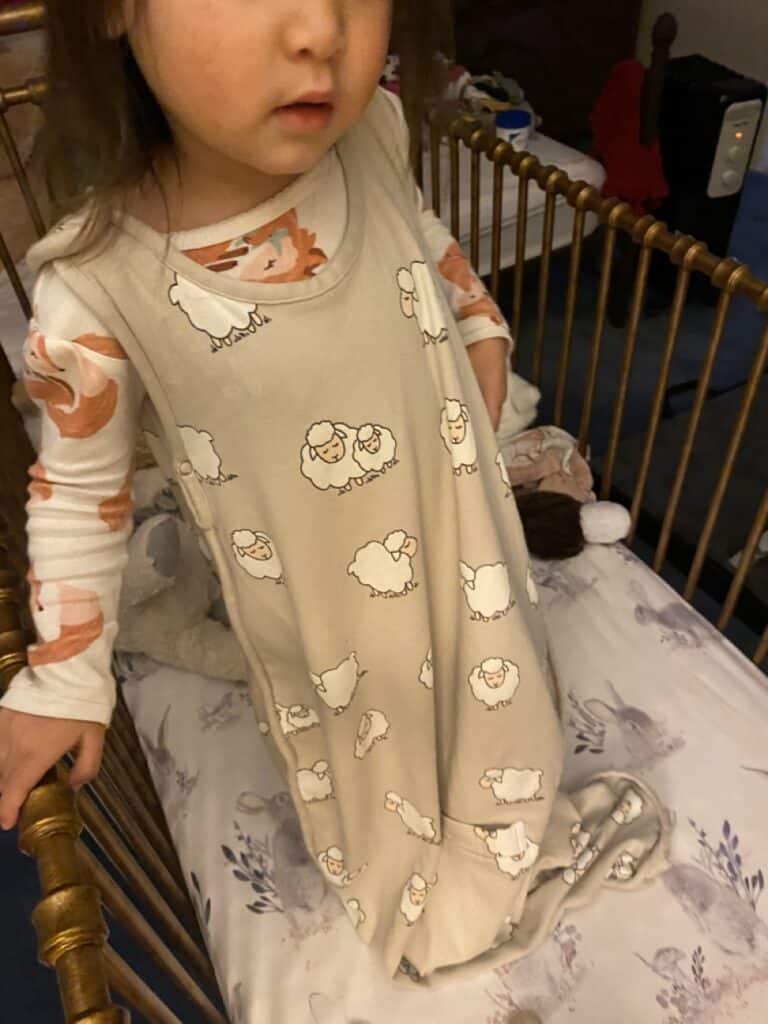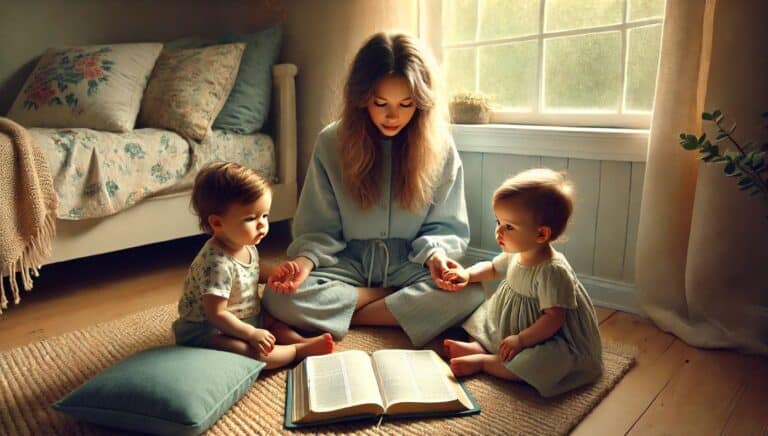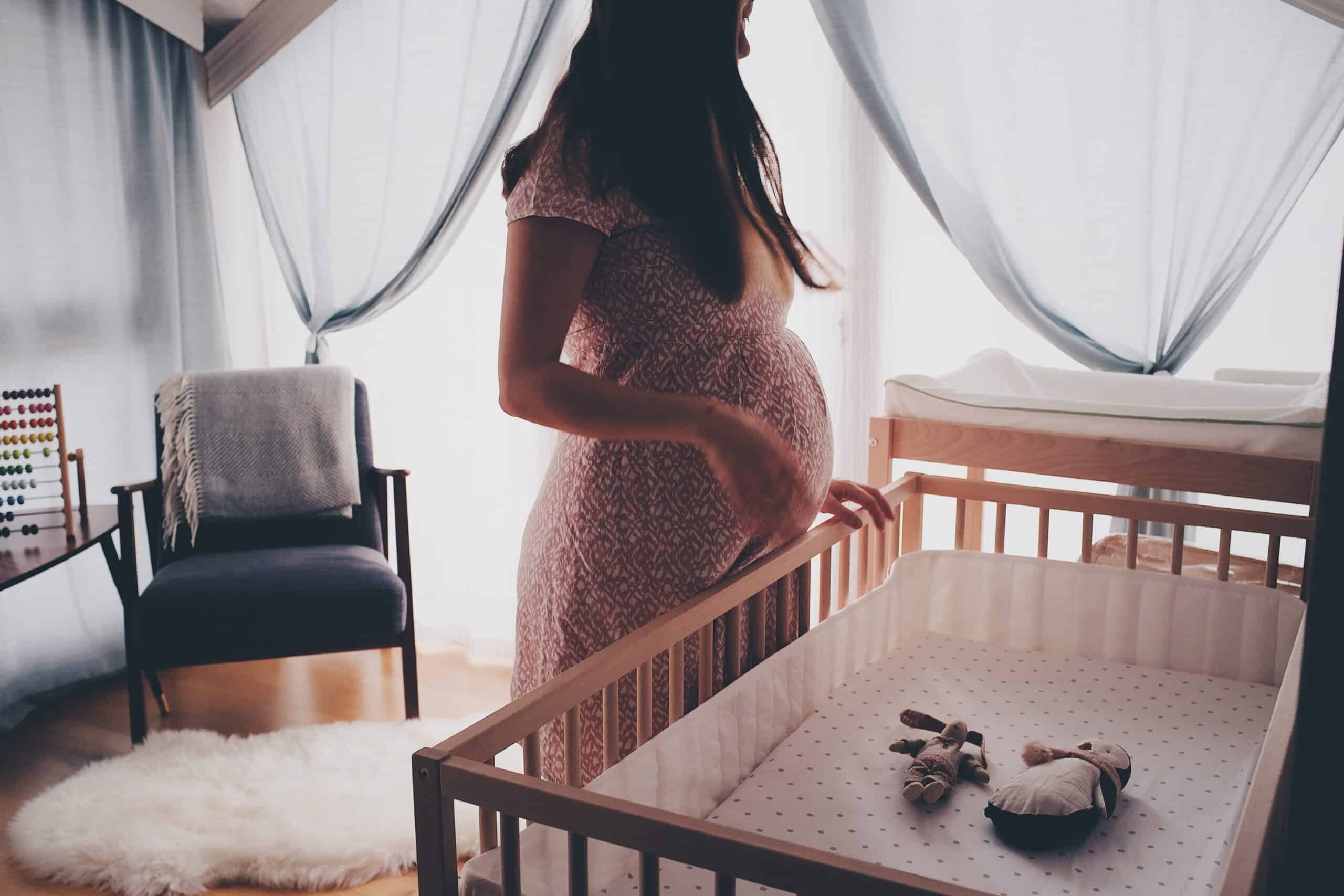
Welcome to the wonderful, sometimes overwhelming world of parenthood! As you eagerly anticipate the arrival of your little one, you might be wondering about the gear you’ll need to navigate this exciting new chapter.
From the basics that will support feeding and sleep routines, to items that promise to make life with a newborn a little easier, we’ve got you covered.
This guide breaks down the top baby essentials, offering you the inside scoop on what truly matters in that long list of newborn must-haves. Let’s embark on this parenting journey together, one baby essential at a time.

Baby Essentials – Hygiene
- Diapers & Wipes
- Diaper cream
- Changing Station
- Baby Nail Filler or Clipper
- Bathtub
- Wash clothes or sponge
- Baby Towels
- Baby Shampoo, Body wash, and Lotion
- Baby Clothes
1. Diapers & Wipes
Diapers are the first thing to be put on babies as soon as they are born. And it will be stuck with your baby every day for a few years.
It’s definitely one of the most essential items for newborns. There are different sizes of diapers. It starts with size 0 (or size N), which is for newborns.
My favorite diaper is Coterie Diaper. It’s super soft, safe, and absorbent. It has signicantly reduced my baby’s diaper blowout and leaks.
The size of the diaper grows as your baby grows. Every baby grows at their own speed. When to change sizes varies a lot from size 0 to size 3.
Don’t stock too many sizes 0 at the beginning. You might not need them all. You can start with 200 to 300 diapers (that’s around 2 to 3 packs depending on the packaging).
Wipes and diapers go hand in hand. But baby wipes can do a lot more. This is one of the baby items I love most after I had babies. You can use them to wipe their hands and feet, and toys. I always keep a pack in the car for my own use.
Tips from Amy Baby
You don’t need to bring diapers or wipes to the hospital for delivery. They will provide diapers and wipes. Mostly there will be extra diapers and wipes. And you can take them home with you. After the baby comes home with you, consider putting diapers and wipes in multiple rooms where you and the baby hang out.
During the newborn phase, you can change the baby anywhere. Keep a few diapers, a pack of wipes, a burp cloth, and a set of clean baby clothes in a bin or bag in the car. That can save you when you forget to bring any of these things when you are out with your baby. I find that happens a lot since we have a baby.
2. Diaper Cream
Most newborns pee and poop have no scent. It’s hard to know when to change diapers unless you check that blue line frequently. Your baby can go through 8 to 12 diapers a day at first. That means you are constantly wiping their bottom with your baby wipes. Even though most baby wipes are made of 99% of water, that 1% could still irritate your baby’s skin. That’s where the diaper cream comes in. We love Aquaphor! This one big jar of Aquaphor can last forever.
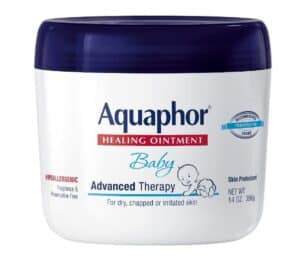
Tips from Amy Baby
Aquaphor is not only used for baby’s rash on their bottom, it can be used anywhere on their skin if there’s a chap. I bought a small size to put in the diaper bag for the baby or myself (such as chapped lips during winter).
3. Changing Station
Changing station is where you change your baby’s diapers. It can be a changing table. Or it can be a changing station, where you set up the changing pad on a dresser. We highly recommend using a dresser as your changing station. There are a couple of downsides to a changing table. 1. Your baby can outgrow the changing table before they are potty trained. The standard length of a changing pad is 32 inches. That’s around one year to 18 months old baby size. 2. Once your baby is done with a diaper change, the purpose of changing the table is done as well. Where you can still use the dresser as a dresser.
To set up a dresser as the changing station, simply put a changing pad on top of the dresser. Some nursery dresser comes with a changing top (tray). But you still need to purchase a changing pad to put in it. Or you can just use any dresser you already have at home. Keep in mind the dresser you use should be around 30 to 35 inches tall, or your waist height. So you can change your baby comfortably. The length should be longer than 40 inches. That gives you enough room for the baby and a diaper caddy.
For changing pads, I prefer traditional contoured fabric-covered changing pads to wipe-clean silicone pads. I own each of them. The silicone pad is more expensive and is much harder than contoured pads. The only advantage is that it is easy to wipe clean. With the trick I mentioned under Tips from Amy Baby, you don’t even need to wipe the pad. We pick Summary Contoured Changing Pad. It has the highest review on Amazon.
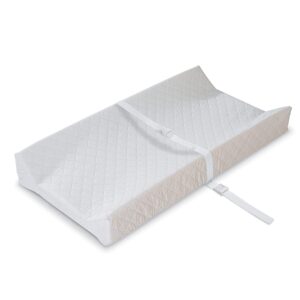
Tips from Amy Baby
We always use a disposable changing pad on top of this changing pad or its cover. If it gets dirty, we just toss it and change a new one. We never need to wipe or clean the changing pad. We always keep one in our diaper bag as well.
This changing pad is very light. When your baby gets older and keeps moving around, the changing pad can move around too. If you don’t want to drill a hole in your dresser to fix the changing pad, I would put a Grip Shelf Liner underneath. It helps from moving around easily.
4. Baby Nail Filler or Clipper
Did you know babies are born with long nails? Do you have to trim their little nails? The answer is Yes! This is to prevent them from scratching themselves. Their nails grow back really fast. Even though this is not a daily task, you surely have to do this often. The task can be intimidating, especially for new parents. A baby nail filer can make this task much more relaxing. No need to worry about hurting the baby’s fingers. Royal Angel Baby is Amy Baby’s pick.
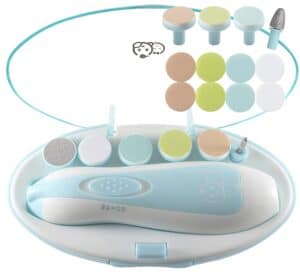
Tips from Amy Baby
Breastfeeding is the best time to trim your baby’s nails. If you are not breastfeeding, it can be easier to do this after you feed your baby. As your baby grows, her nails grow harder as well. It might be harder and takes a long time to file them. You can switch to nail clippers as your baby can be more cooperative.
5. Bathtub
Are you excited but nervous about giving your precious baby a bath? I was. A good baby bathtub can make this task much easier and more enjoyable. With features like non-slip surfaces and gentle inclines, they prioritize your baby’s safety. Plus, they make life easier for you too, allowing easy access to every nook and cranny. Skip Hop Baby Bathtub is our pick.

Tips from Amy Baby
Think through the steps of transition from bath to drying the baby. Plan it out before you start the bath. Get everything ready before bath as well. It’s unsafe to leave the baby alone in the bathtub if you forget anything. It will be helpful to have a 2nd person available.
6. Wash Cloth or Sponge
Normally you will get a free sponge from the hospital. So you don’t really need to buy a bath sponge. One side of the sponge is a very soft brush. You use it to brush your baby’s hair (if there’s any). A washcloth is much easier to wash everywhere else for your baby. I love this soft, gentle muslin cloth from Love Tree. They are made of bamboo cotton. There are also different cute patterns for you to choose from.
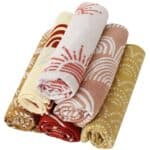
Tips from Amy Baby
Baby’s first bath happens in the hospital. The loving caring nurse will give your newborn the first bath in your postpartum room. It’s a great opportunity to learn how to bathe a baby.
7. Baby Towel
There are so many newborn towels out there. They are very cute but they are also quite small. It won’t take long for your baby to outgrow the newborn towel. I would skip the newborn towel right to the toddler towel unless your baby is on the smaller side. Look for a towel that is thick enough and won’t always feel wet.
8. Baby Shampoo, Body wash and Lotion
Do you need to buy baby shampoo and lotion for your baby? The answer is no. The idea is to have less harmful chemicals for your sensitive baby’s skin. But they are actually very dry for your baby’s skin. I have used Pipette shampoo myself. It makes my hair very dry and frizzy.
Same as a baby body wash and baby lotion. The truth is you don’t really need to use Shampoo or body wash to bathe your baby. I just use water. If you really need to use something occasionally, I recommend Dove Soap. As for baby lotion, you should prepare one if your baby’s skin looks dry after a bath. We highly recommend Vanicream. It has very clean ingredients and is also very moisturizing.

9. Baby Clothes
Buying baby clothes was what I liked most when preparing for my little peanut. But don’t buy too many newborn sizes as your baby could outgrow them very fast. One or two fancy clothes for grandparents’ visits or other occasions should be enough. Because baby ruins their clothes with spit-ups pretty fast too. Newborns just need onesies. They are the easiest.
Onesies with zippers are easier to put on than onesies with snaps. The tiny snaps can be a struggle for dads’ big fingers. Look for cotton or bamboo materials. Carters is a great place to find good quality baby clothes at affordable prices. We do recommend onesies from Magnetic Me, especially for new parents. Imagine no zipper and no snaps, they just click themselves. Getting the baby dressed made really easy.
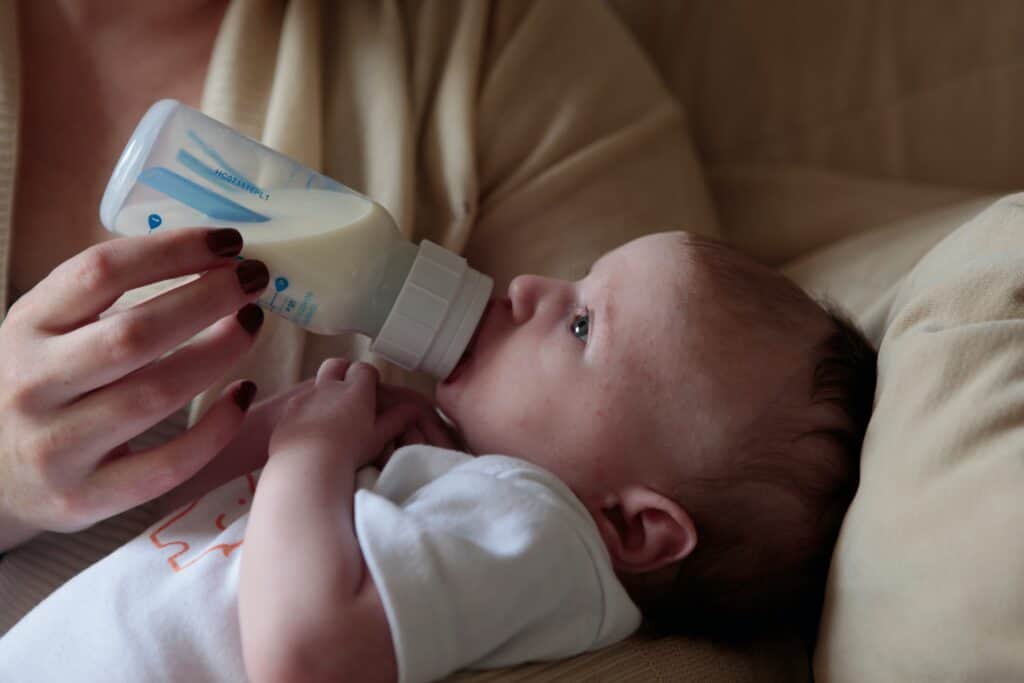
Baby Essentials – Feeding
- Bottles
- Formula (if needed)
- Breast Pump and Milk Storage Bags (if pumping)
- Burp cloths
- Pacifiers & Teething Toys
10. Bottles
I have a friend whose baby refused to use a bottle. If you have a baby like that or you want to exclusively breastfeed, you can cross off this item. If you want to give your baby a bottle at some point, put this on your list. Newborns typically start with a stage one nipple bottle. Stage one bottle size is around 4 – 5 oz, with a slow flow nipple.
Between 3 to 6 months, your baby will switch to a stage two bottle. That is an 8 oz bottle with a medium-flow nipple. All nipples are made of silicones. I prefer silicone bottles to plastic bottles. Sometimes you need to heat up the milk in the bottle, silicone is safer for our precious babies. My favorite bottle is Boon Nursh Baby Bottle.
Boon’s Nursh baby bottle has no vent. That means no air goes to the baby, and that means a less colicky baby. That also means easy to clean. All milk contact is silicone. The design is very easy for the baby to hold. This is definitely my favorite bottle.
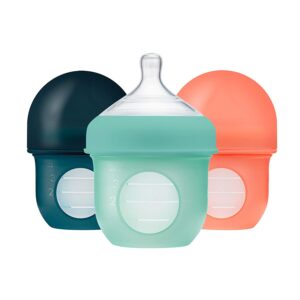
Tips from Amy Baby
Introduce the bottle to your baby no later than 6 weeks old. Your baby might not like to take the bottle if you do this too late.
11. Formula
Add formula to your list if you planning on supplement feeding with formula or exclusively formula feeding. To me, breastfeeding is the most enjoyable time I spend with my babies. But it is also the most challenging thing. Your milk doesn’t come in until 3 or 4 days after the baby’s birth. On the 2nd day, our baby boy was so hungry that he was crying every single hour at the hospital. And I didn’t have much milk yet. Your milk supply changes throughout the day. Supply goes low during the evening, but babies are more hungry during the evening. Adding formula to our feeding really made my life easier. My favorite formula is Kedamil.
Check out Best Organic Baby Formula if you want more options.
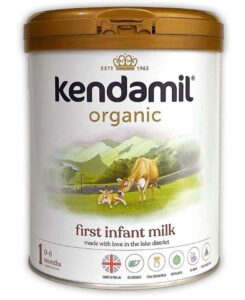
Tips from Amy Baby
If you ask, the hospital will give your free samples of formula for you to take home. Use formula as your last feeding at night. That helps the baby sleep longer at night. Because it takes longer for a baby to digest formula than breast milk. So the formula is more filling and your baby won’t wake up too quickly from her hunger.
12. Breast Pump and Milk Storage Bags (if pumping)
Pumping is my least favorite thing. After returning to work, pumping wasn’t an option for me. If you don’t need to pump, you can skip this item.
Just like diapers and milk storage bags, breast pumps come in different types and sizes. From manual to electric, single to double, traditional to wearable, the choice is entirely dependent on your lifestyle, comfort, and the frequency of expressing milk. Starting with an electric pump with the most comfort might be a good idea for a new mother. Our favorite has emerged as the Spectra S1 Plus Pump.

Milk storage bags go hand in hand with breast pumps. It stores your breast milk after each pump. The sizes of milk storage bags vary, with the most common ones holding around 6 ounces, but always ensure to fill only three-quarters of the bag to allow room for the milk to expand when freezing.
Starting off, you may need around 50 to 100 bags per month, depending on your milk supply and your baby’s consumption. However, the quantity may vary based on the growth of your baby and its dietary needs. After having used various brands of milk storage bags, our top pick is the Lansinoh breast milk storage bags.
13. Burp cloths
A burp cloth is an indispensable item in your baby care arsenal. As newborns have a developing digestive system, they often need to burp to release air swallowed during feeding, which can be accompanied by spit-up.
The burp cloth is your defense against these surprise spit-ups, saving your clothes from the inevitable mess. They’re usually made from absorbent materials like cotton, and their small, handy size is perfect for draping over your shoulder during burping or wiping your baby’s mouth post-feeding.
Always having a burp cloth within arm’s reach is a simple yet effective strategy for keeping things clean and comfortable for both you and your newborn.
14. Pacifiers & Teething Toys
My babies aren’t big fans of pacifiers or teething toys. Neither of them used pacifiers for too long. But as a newborn, pacifiers really help to soothe and comfort them. They also afford us some peaceful moments.
A few months later, the teething phase began, and the right teething toy can relieve the gum discomfort. Even though my babies didn’t use them that much, I still think this is essential for them to get through the most discomfort moments.
Tips from Amy Baby
Hospitals normally provide a pacifier for your baby. So you don’t need to bring one to the hospital. You can also buy one less pacifier knowing the hospital will provide at least one for you!
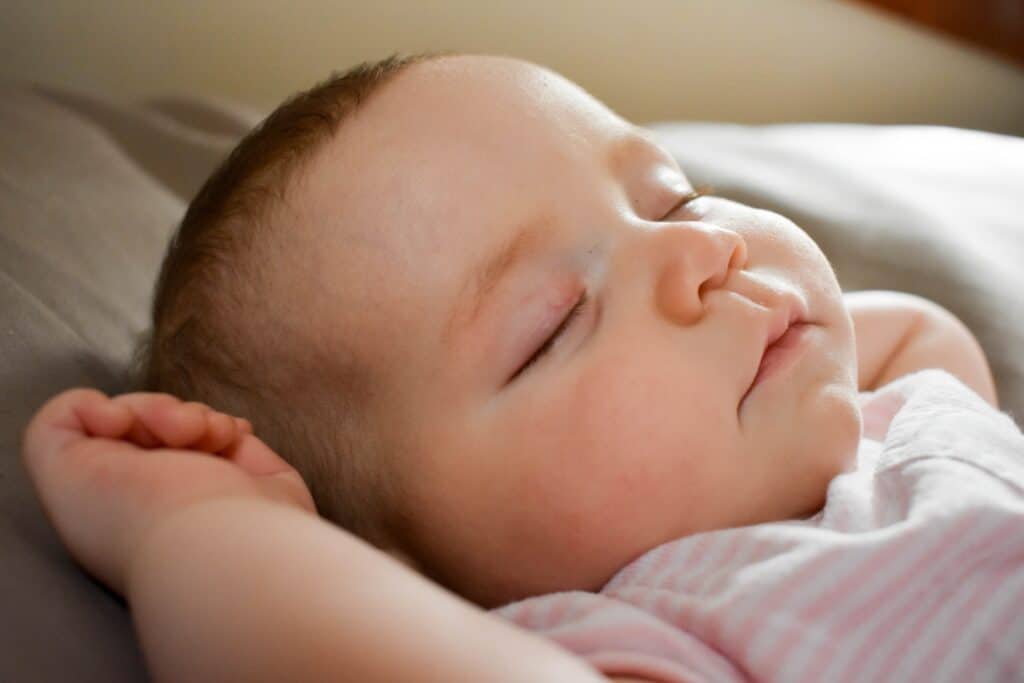
Baby Essentials – Sleeping
15. Bassinet or Mini Crib
As recommended by all pediatricians, newborns should be room-sharing. That means for the first 3 months or so, your baby will sleep in a bassinet or mini crib or pack-n-play in the same room with you. You will have to get up and feed and change your baby every 2 to 3 hours (luckily 4 hours after a few days) regardless of day or night.
A safe and convenient bassinet or mini crib is perfect for those early months when your newborn needs to stay close to you, whether for frequent feedings or simply for that comforting sense of proximity.
We love our HALO Bassinest Soothing Swivel Sleeper 3.0. It was convenient to place right next to my bed, ensuring my little one was within arm’s reach during those late-night feeds and diaper changes.

Tips from Amy Baby
It takes some practice to master the swaddle. You can ask the nurse to teach you how to swaddle at the hospital. You can also cheat with a swaddle sleep sack like this.
16. Sawddles & Sleep Sacks
A swaddle is a snug wrap for newborns, providing a womb-like environment that aids in calming them and enhancing their sleep. It’s perfect for the initial months when the startle reflex is high.
In contrast, a sleep sack, essentially a wearable blanket, comes into play when your baby starts to roll, usually around the 3-4 months mark. Unlike a swaddle, it doesn’t restrict movement, ensuring safety while keeping your baby cozy.
Choosing between a swaddle and a sleep sack depends on your baby’s developmental stage. While swaddles suit younger, less mobile babies, sleep sacks are ideal for older, more active ones.
Tips from Amy Baby
There is another option for swaddle is the swaddle sleep sack. It takes some practice to make a good swaddle. Ask the nurses at the hospital to teach you how to swaddle as many times as you need. However, you can also use this kind of swaddle sleep sack after a few days. It’s much quicker and easy, especially for new parents.
17. Baby Lounge
Baby lounge (or lounger) such as Snuggle Me is designed with raised borders and a semi-reclined position, it offers a perfect spot for tummy time, play, and rest, promoting healthy development and a sense of security. I put it here as a must-have as I found it to be a lifesaver during those first few months, offering a portable, cozy space where my baby could relax or nap, whether at home or during our family outings.
A baby lounge allows your little one to be part of the family activities while ensuring they’re in a safe, comfortable spot. It’s an essential tool for every new parent navigating the exciting journey of parenthood.
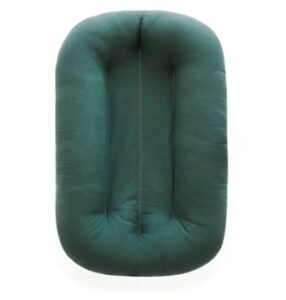
18. White Noise Machine
The need for a white noise machine stems from the fact that babies, particularly newborns, are accustomed to the loud and constant noise they heard in the womb. This noise is reminiscent of the blood flow and bodily functions they heard for nine months, which is much louder than typical ambient noise in a quiet home.
A sudden shift to silence can be quite startling for them. Therefore, white noise machines, with their consistent, soothing sounds, can help recreate this familiar environment, providing a comforting and calming effect.
The white noise also helps mask sudden, disruptive noises, such as a doorbell ring or a barking dog, that can startle a baby and interrupt their sleep. By providing a consistent audio environment, the white noise machine helps your baby fall asleep faster and stay asleep longer, promoting healthy sleep patterns and overall well-being.
19. Baby Monitor
A baby monitor allows you to monitor your baby’s movements, sounds, and sleep patterns, offering you reassurance about their safety and well-being.
I recall how it became a silent guardian in our home, giving us the freedom to manage other chores or take a brief respite, all while keeping a watchful eye on our little one. During those early, anxious months, the ability to observe and listen to my baby from another room provided a much-needed sense of security.
The baby monitor is not just a device; it’s a bridge of connection, a source of peace, and an extra layer of safety in your baby’s environment. The balance it offers between caring for your baby and navigating daily life is indeed invaluable. For any parent, it’s an essential addition to the toolkit of baby gear.
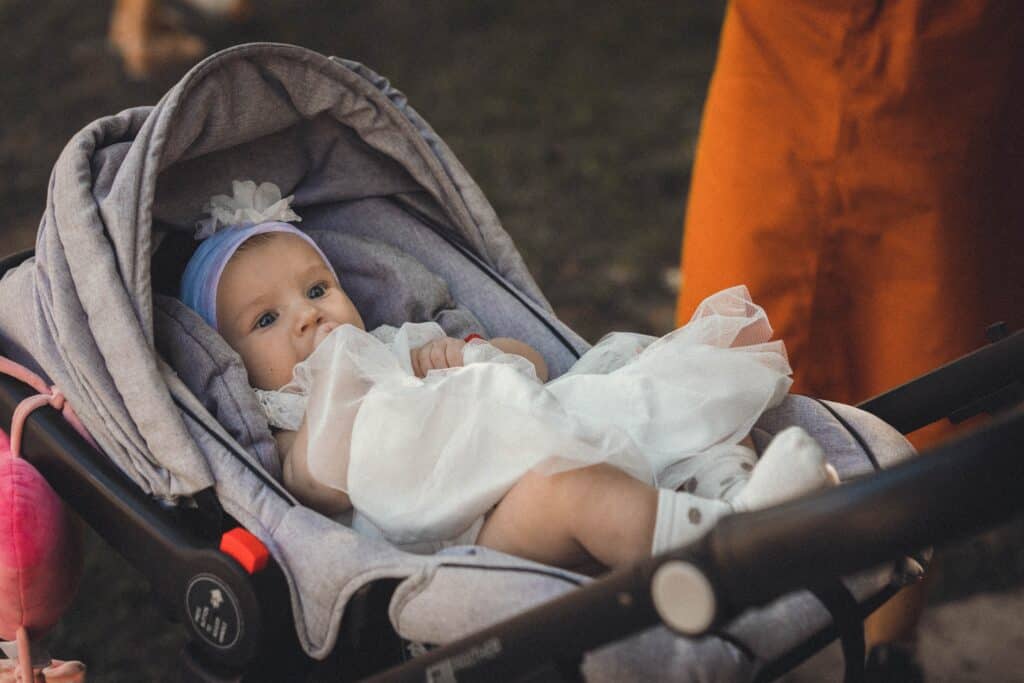
Baby Essentials – Gear
20. Car Seat
A car seat is a legal requirement in all states for bringing your baby home from the hospital. You should have your infant car seat installed before you head to the hospital. Your local fire station can help to install and inspect your installation of the infant car seat.
Your baby will stay in an infant car seat facing backward from age 0-12 months. There are convertible car seats with an infant insert that allows the infant to stay there facing backward as well. An infant car seat normally has a 5-year expiration date. Be sure to check the expiration date when you are buying a used car seat or get a hand-me-down.
If you haven’t heard of this, there is a cool innovation called rotating car seats. You just turn the seat toward you, and voila – loading and unloading become a breeze!
My all-time favorite is Nuna Pipa lite rx. It’s one of the lightest infant car seats, and only takes a second to install.
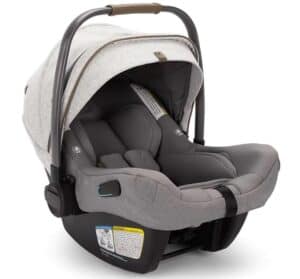
21. Stroller
Stroller was one of my favorite baby gear to shop for. Imagine taking your baby out in the stroller, your coffee (or any favorite drink) in the stroller cup holder, and your diaper bag in the basket underneath your baby…
Shopping for a stroller can seem overwhelming, but the key lies in identifying your specific needs. If you often travel by car, a travel system that includes a car seat and stroller in one might be your best bet. For those navigating crowded city streets or public transit, a lightweight, compact stroller is ideal. If you’re planning for more kids in the future, consider double strollers that grow with your family.
One must also consider features like reclining seats, storage baskets, and ease of folding. Safety should always be a priority, so ensure the stroller has a sturdy frame, good suspension, and reliable brakes.
Strollers range from simple umbrella strollers to robust jogging strollers, luxurious full-sized strollers, and practical double strollers. Each type has its own perks and is designed to make parenting easier.
In essence, a stroller is more than just a conveyance for your baby; it’s an investment in convenience, mobility, and your baby’s comfort. It’s your child’s first vehicle, setting the stage for numerous adventures and shared family memories.
There is another new baby gear called a stroller wagon. It is something between a stroller and a wagon. Ideally for kids aged between 6 months and 5 years. But there are a lot of stroller wagons compatible with an infant car seat. If this is your second baby, you can take your baby and toddler out with a stroller wagon instead of a traditional stroller.
22. Bouncer or Swing
A bouncer or swing designed with gentle motion and cozy seating, can soothe a fussy baby or provide a hands-free moment for parents. A bouncer uses your baby’s natural movements to create a bouncing effect, while a swing offers rhythmic, side-to-side, or back-and-forth motion. Every baby is different. Both my babies love bouncers but don’t like swings much. I do know babies from some of my friends love the swings.
Just keep your receipts. Most of these baby gear can be returned within certain days.
Tips from Amy Baby
During those early days, I would put my babies in the bouncer to bounce them to sleep, then transition them to their bassinet or crib. It was particularly helpful during nighttime for me.
Some bouncers come with a versatile design that allows them to transform into a stationary chair or remain as a bouncing seat as your baby grows, providing continued utility well into the toddler years.
23. Baby Carrier
A baby carrier allows you to wear your baby (keep your baby close) while keeping your hands free. It made carrying my baby super comfortable, and I could actually feel the weight being evenly distributed, taking the strain off my back and shoulders. Whether I was out and about or just doing things around the house, my baby carrier was a constant companion. Plus, my little one absolutely loved the snug feel and the view from up high!
There are many options such as wraps, slings, or structured carriers. Make sure to read the instructions for wearing newborns. There is some practice and learning curve for using wraps or slings. But once you get the hang of it, it’s really good. I went straight for structured carriers.

Baby Essentials – for Mom
- Nursing Bra
- Nursing Pad
- Nipple Cream
- Nursing Pillow
- Diaper Bag
- Self-Care Items: Pari Bottle, Ice Maxi Pad, Maxi Pad
- Maternity/Nursing Clothes
24. Nursing Bra
Nursing bras offer the support you need while also providing easy access to nursing. You wear it 24/7 after your baby is born. It’s worth investing in a few really comfy and supportive nursing bras. Kindred Bravely has many good options.
25. Nursing Pad
When I was nursing, these small, absorbent pads were a real lifesaver, easily fitting inside my bra to soak up any excess milk. They saved me from numerous potential embarrassments of leaking through my clothes, especially in public or during social gatherings. Plus, the extra layer of softness provided some much-needed comfort. Whether you opt for disposable or washable ones, nursing pads are a must-have for any breastfeeding mom.
26. Nipple Cream
Those early days of breastfeeding can be tough, and it’s not uncommon to experience dryness or soreness, or cracks. But applying a bit of nipple cream, especially one with healing lanolin, provided instant relief. It also created a protective barrier on the skin, promoting healing between feedings. So, if you’re planning to breastfeed, I’d say nipple cream is a must-have in your nursing arsenal. Trust me, your skin will thank you!
Tips from Amy Baby
The lactation will teach you how to breastfeed at the hospital. They gave me some free samples of nipple cream from both of my experiences. They were more than enough for my entire breastfeeding journey.
Make sure you ask for some samples and don’t buy too much nipple cream at the beginning. You can buy more if those samples are not enough.
27. Nursing Pillow
When I first started breastfeeding, my nursing pillow quickly became my best friend. It helped me position my baby at just the right height, making feedings so much more comfortable for both of us. My back and arms thanked me, I tell you! And it wasn’t just great for breastfeeding. As my baby grew, that same nursing pillow became a fantastic support tool.
When my little one started learning to sit up, the nursing pillow provided a safe and soft space for those wobbly moments. It’s like it gave them a little boost of confidence as they were mastering a new skill.
28. Diaper Bag
Forget about your purse if you are going out with your baby. The diaper bag will be your new purse! The good news is there are many stylish options for diaper bags. Most diaper bags are designed with many pockets and compartments. It helps with staying organized. I knew exactly where everything was. No more rummaging around when a diaper emergency struck!
I had evey baby essentials I needed in my diaper bag, from diapers and wipes to an extra set of clothes, and of course, some snacks for me too! But it’s not just for the baby stage. Even as my kids grew, that trusty diaper bag evolved with us. Snacks, toys, water bottles – you name it, the diaper bag carried it all. So, when it comes to must-haves for parenthood, a good, sturdy diaper bag is right at the top of my list.
29. Self-Care Items: Pari Bottle, Ice Maxi Pad, Maxi Pad
Your body goes through a lot during labor. It needs great care, just like your baby. Pari bottle, ice maxi pad, and maxi pad are the minimum items you need for your postpartum recovery. Like many other essential items, your hospital also provides these 3 items (some may have more). You can ask for more ice pads and maxi pads. Bring them home as well.
Ice maxi pad really helps with the soreness. If you used all the ones from the hospital and need more, Frida Mom ice pad is just as good as the ones from the hospital.
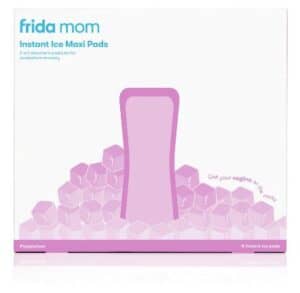
30. Maternity / Nursing Clothes
Maternity clothes, with their comfortable fit and accommodating designs, are a confidence-boosting essential that ensures you can embrace your changing body stylishly and comfortably throughout your pregnancy journey.
Finding tops and dresses that provided easy nursing access, while still making me feel put-together, was a game-changer. Wrap styles, button-downs, or tops with discrete nursing panels made breastfeeding so much easier, especially when I was out and about. Most nursing clothes can accommodate my growing bump.
Onto my second baby, I figured I should only buy nursing clothes instead of some maternity clothes, some nursing clothes. It serves both purposes. My favorite brand is Seraphine. After trying a few brands, I just stuck with Seraphine.
Baby Essentials – Nice to Have
The above items are absolute lifesavers, but who doesn’t love some extra sprinkles on their sundae? Let’s get into the fun extras that aren’t strictly necessary, but sure do make motherhood a tad bit smoother (and funnier!).
- Nursing Cover
- Diaper Pail
- Rocking Chair for Nursery Room
- Pacifier Clip
- Silicone Straps for Toys, Teethers, Bottle…
- Play Mat
- Magnetic Me
1. Nursing Cover
When I had my first baby, I didn’t have a nursing cover. I didn’t feel comfortable breastfeeding. That really made our going out experience limited to the feeding schedule. For my second baby, I bought a Cocoon. That’s a game-changer! I did not sacrifice any of my toddler’s activities. Just brought my baby and toddler and go!
I felt comfortable breastfeeding anywhere I went. It was comfortable and stylish. It provided a calm, distraction-free environment for my baby to nurse in peace. I also used it as a blanket for my baby. When my baby doesn’t need it, I use it as a shaw for myself! It won’t be wasted. Even though it’s a bit pricey, I still feel the money was well spent.

2. Diaper Pail
Newborns go through 8 to 12 diapers a day. older babies go through an average of 5 diapers a day. You don’t want to toss a dirty diaper to your trash can every single time every day for a few years. Right, that sounds awful!
A diaper pail not just saves your trips to toss dirty diapers, but also locks in the odors, keeping your nursery smelling fresh and clean.
Like many other baby gears, diaper pail also has many options. Some are cheaper. Some are pricier. Some cheaper ones require special refill bags to make it work. That’s an additional recurring cost.
3. Rocking Chair for Nursery Room
I don’t think you must have a rocking chair to put your baby to bed. I actually don’t have one for my second baby. He is such a good sleeper that he doesn’t require rocking. But it is really nice to have one to be able to gently sway back and forth, cradling your baby close. It provides soothing comfortable moments for both you and your baby!
4. Pacifier Clip
As a first-time mom, I would never let my baby use a pacifier that fell to the ground. That has improved for the second time. Regardless, you want to avoid these situations as much as possible. A pacifier clip can easily solve the issue. It secures your baby’s pacifier to their clothes, preventing them from falling onto the ground or getting lost. Boom, problem solved!
5. Silicone Straps for Toys, Teethers, Bottle…
I wasn’t aware of this product when I had my first baby (perhaps it didn’t exist then). However, I bought it for my second baby, and it’s been a game-changer, particularly with baby boys who enjoy tossing things. This handy tool allows you to secure your baby’s teether, toy, or bottle to their car seat, stroller, or high chair. No more worries about retrieving these items from a dirty floor. It’s a small change, but it makes a significant difference.
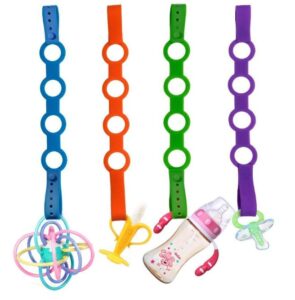
6. Playmat
A playmat, or activity mat, is a soft, comfortable surface where your baby can play, explore, and develop crucial skills. These mats often come with engaging toys, bright colors, and varied textures that stimulate your baby’s senses and motor skills.
My babies spent a lot of time on their playmat during their first few months. They both had their first head lift up and roll over on the playmat. I packed their playmat to the grandparents’ house.
While not an absolute necessity, a playmat is a delightful bonus to your baby gear collection that can enrich your baby’s playtime and development.
7. Magnetic Me
Magnetic Me is not a baby gear, but a brand of baby clothes that uses the magic of magnets to make dressing your baby quick and effortless. It was a lifesaver to my husband especially for our first baby.
When you are a first-time parent, you get nervous about doing anything with your newborn. Imagine getting your little baby dressed with your big hand, and snapping all those tiny snaps, while sometimes your baby might be kicking while you are trying to tackle this task. Magnetic Me makes this task much easier.
In the whirlwind of parenthood, anything that saves time and reduces stress is a win. I remember how happy my husband was when I bought some Magnetic Me clothes!
What are the Must-Haves for a Baby?
When welcoming a newborn, there are some non-negotiable must-haves that every parent needs. From a safe place to sleep such as a crib or bassinet, to feeding essentials like bottles or breastfeeding supplies, and a reliable set of baby clothes. These must-haves ensure your baby’s basic needs are met, providing a comforting environment for your little one to thrive.
- Diapers
- Wipes
- Clothes
- Bassinet or Crib (including sheets)
- Bottles (if not breastfeeding or mixed)
- Formula (if not breastfeeding or mixed)
- Baby bathtub
When Should I Start Buying Baby Essentials?
There is no one-answer-fits-all to this question. Deciding when to start shopping for your baby can depend on various factors, including personal preference, cultural practices, or financial readiness.
A common start time is around the 20-week mark. It’s that sweet spot where you’re far enough into your pregnancy and have ample time to do your research and compare products without feeling the rush.
About 80% of miscarriage happens during the first trimester. That’s between 0-13 weeks. After 20 weeks, the chance of a baby surviving outside of mom’s womb is high. And it’s getting higher and higher each week.
So starting to research baby essentials after 20 weeks is safer. You don’t have to worry about your pregnancy. Your morning sickness is probably mostly over. Your energy level experiences some boost. Perfect time for some homework for your sweet baby, and build your baby registry!
You don’t have to start buying baby essentials until the third trimester. Some of the items, such as a playmat, you can even wait until after your baby is born. Always keep the receipt of your purchase. You can return the baby gear if your baby doesn’t like it. So don’t shop too early.
Doesn’t matter when you start buying baby essentials, the most important thing is not to stress yourself out. It’s not good for you. It’s not good for your baby. At the end of the day, the basic needs of your baby are only a few items listed above. what your baby needs most is your love and care!
How Can a List of Baby Essentials Benefit You?
Baby brain is real. It only gets worse after the baby’s arrival. There are just too many things to consider. We are not just responsible for ourselves anymore. The list keeps growing!
That’s where a list of baby essentials comes in handy. It’s like your roadmap to parenting prep. It helps you cut through the noise and focus on what your baby really needs. It also helps you keep organized and prioritized with your daily tasks. It was definitely helpful for me.
Especially when those moments of ‘baby brain’ kick in, you don’t need to stress or overthink. Simply refer to your baby-essentials list and take action – it’s as straightforward as that!
It also can be a huge time saver. Instead of wandering aimlessly through baby store aisles or scrolling endlessly online, you’ll know exactly what you’re looking for. And, when friends and family ask what they can gift you, your list makes it easy to point them in the right direction.
Wrapping Up
Voila, there you have it – the list of baby essentials to get ready to conquer the realm of parenthood, both for you and your baby. Don’t stress out too much about what to buy, or which diaper you should buy. What your baby needs most is you! When you are calm, that calms your baby too.
Just remember, the journey of motherhood isn’t a path you need to walk perfectly. Don’t hesitate to ask for and accept help. This is a long game. Brace yourself for the whirlwind, and cherish each precious moment with your bundle of joy. Hope this list and tips can make your journey less stressful and more enjoyable!
